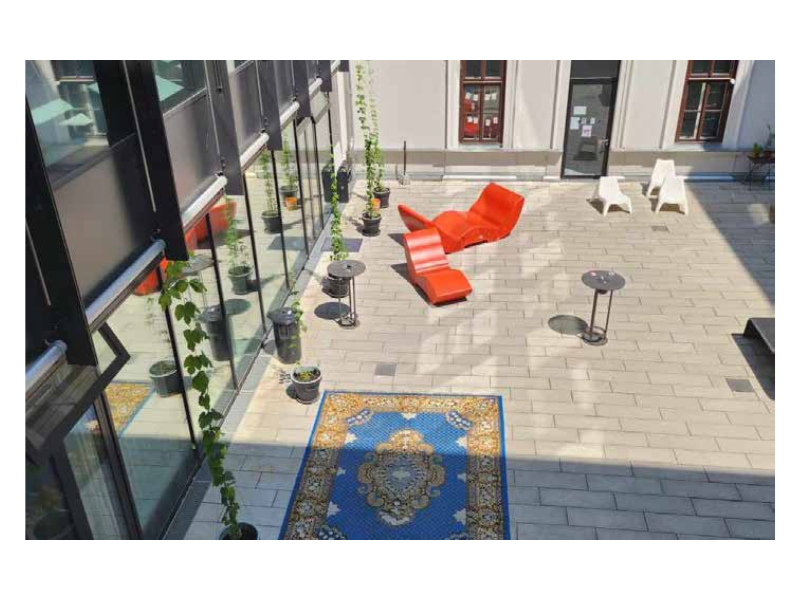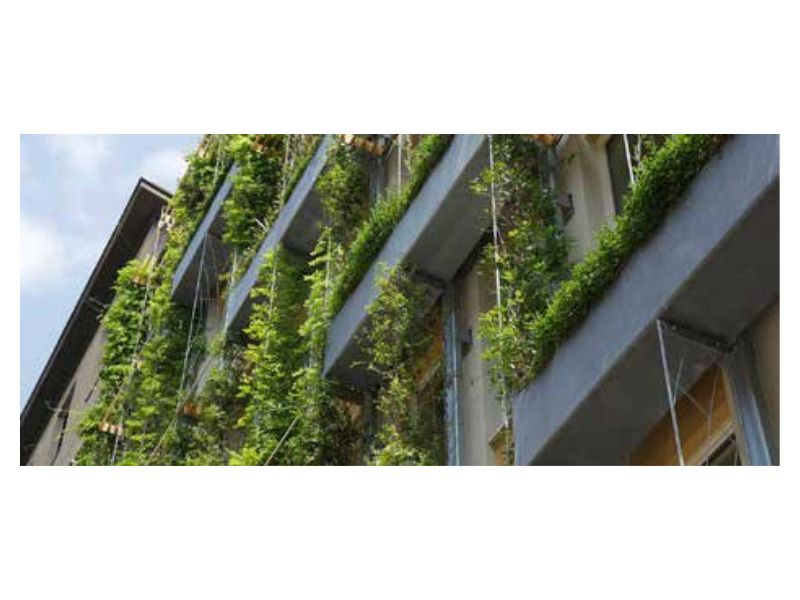
Helene Kallenbach’s project aims to transform the University of Applied Arts Vienna’s Flux-Terrace by creating a vertical hop garden. This initiative seeks to answer how the garden can bring life to the terrace and engage members of the Applied Arts and Sciences throughout the academic year. The project involves installing metal cables for hops plants, offering benefits like aesthetic enhancement, thermal insulation, noise reduction, improved air quality, and biodiversity promotion. The goal is to create a welcoming environment for socializing.
The activity includes planting hop seedlings, installing the structure, and maintaining the garden. The project emphasizes hands-on care for small plants and fostering awareness of environmental elements. The final result is a visually appealing vertical hop garden that enhances the terrace’s ambiance, aligning with the academic year’s cyclical nature.



The Flux-Terrace at the University of Applied Arts Vienna, located at Vordere Zollamtstraße 7, 1030 Vienna. The Flux-Terrace is situated in the midst of Vienna’s urban landscape, providing a unique space for the implementation of the vertical hop garden. The terrace offers an exposed wall where drilling is permitted, allowing for the installation of metal cables for the hops plants to climb. Ideally, the selected location is sunny but protected from heavy rain and wind. The university’s urban setting, coupled with the limited ground space, inspired the creative approach of elevating greenery into the air through vertical greening.
The collaborative experience in this project is characterized by group-based teamwork. Participants have the option for individual projects, but the ideal scenario involves collaboration among 2 to 5 people. This collaborative approach encourages shared responsibilities, effective communication, and a pooling of diverse skills and perspectives. The group setting facilitates collective decision-making in planning, organizing, and executing various aspects of the vertical hop garden project on the Flux-Terrace. The collaborative nature of the experience fosters a sense of community and teamwork among the members of the Applied Arts and Sciences involved in the project.
The project is located at the University of Applied Arts Vienna, right in the middle of Vienna, surrounded by urban landscape. Although Vienna is a very green city, I often notice a lack of greenery. The reason for this is the limited space, which inspires to be creative and elevate the greenery from the ground into the air.
The best planting time is in spring, from late March for older plants and from May for unhardened young plants (or in autumn: from late September to November). The plants are in winter dormancy during this time and can sprout undisturbed in spring. By mid-June, the plant has branched out enough for the first flower clusters to form. This process is also known as inflorescence. Hop flowering begins from late June to early July. The flowering period lasts three to four weeks, depending on the hop variety and its growth conditions. The female hop plant forms its flower clusters from July, which develop into hop cones until harvest from late August to mid-September.
In autumn, the hop plant draws nutrients from leaves and shoots and relocates them to the rootstock. All above-ground parts of the plant turn yellow, then brown, and become dry by mid to late September. It is recommended to prune it to 50 to 60 centimeters in autumn, and then cut it down to the ground in February. No worries, real hops are a perennial plant that can live up to fifty years.
Besides the side effect of improving one‘s technical skills, the most important learning outcome is to develop an understanding of nature by enabling the growth of small plants, observing them, and directly caring for them. Direct contact with the plant fosters awareness of the soil, root system, the cycle of the plant year, environment, and proper treatment of the plant, as well as potential hazards and difficulties on the path to a fully grown, healthy (and potentially productive) plant.
The final result, a design product, is a vertical hop garden that aesthetically enhances the direct landscape and invites people and animals to linger. By addressing the research question, it brings life to the Flux-Terrace and accompanies all members of the Applied Sciences in the changing cycle of the academic year.

